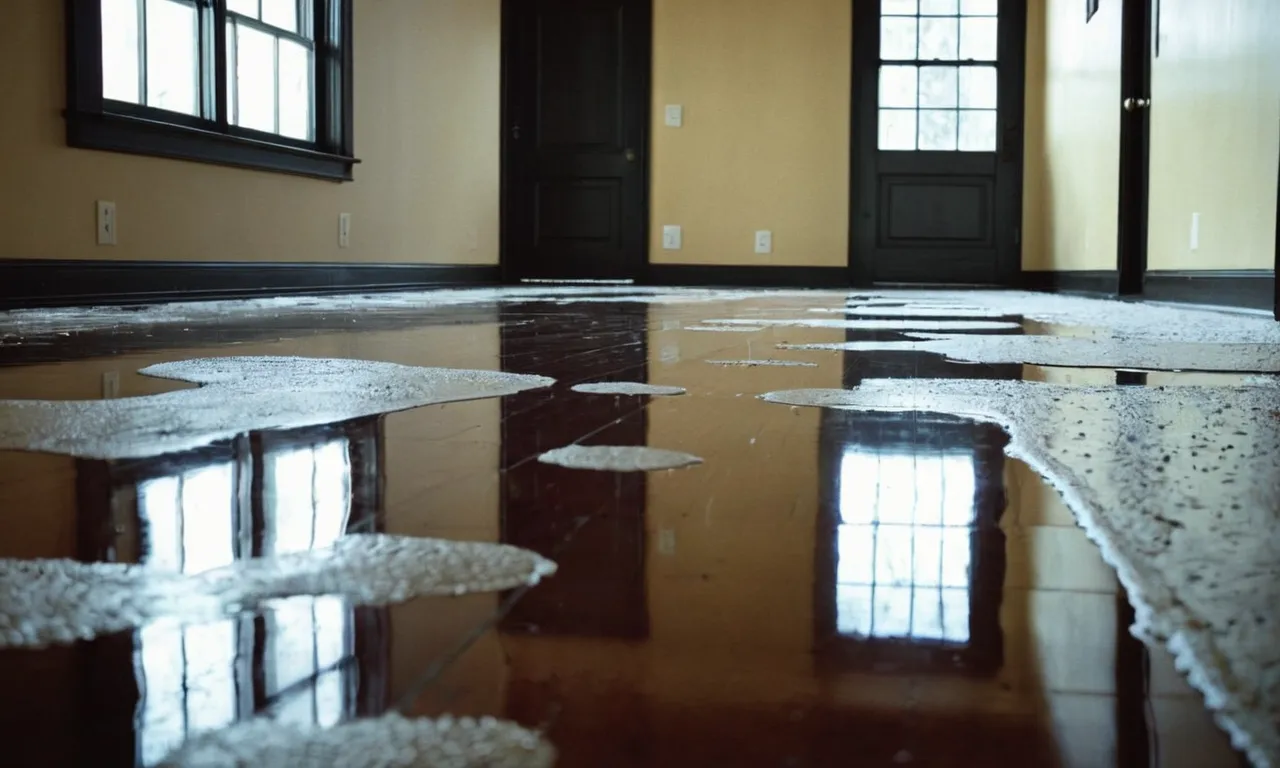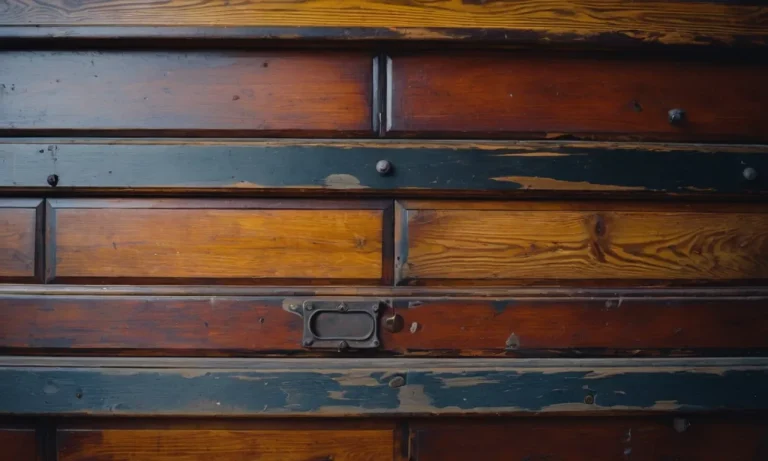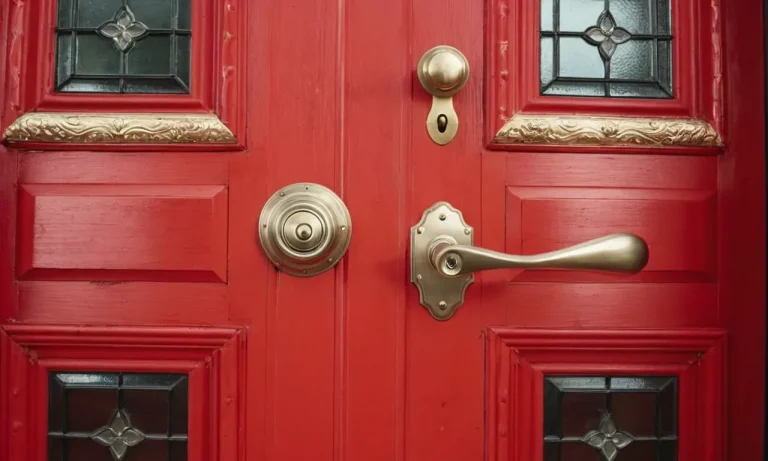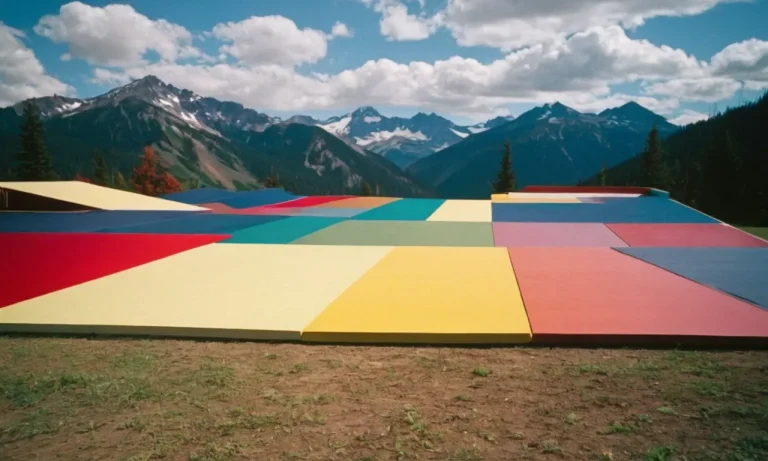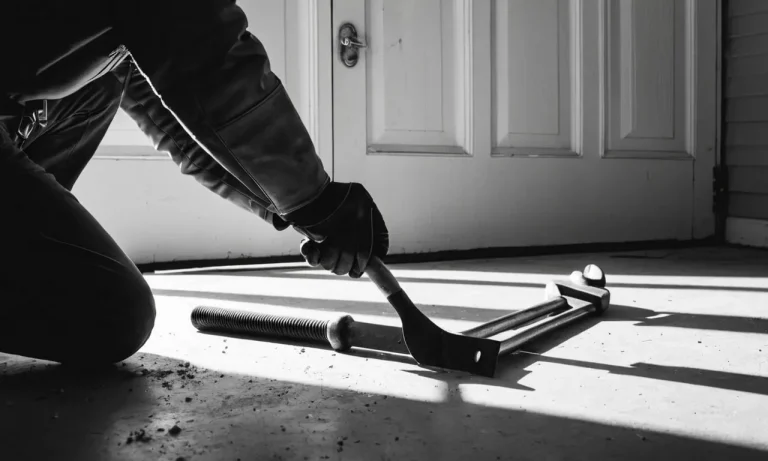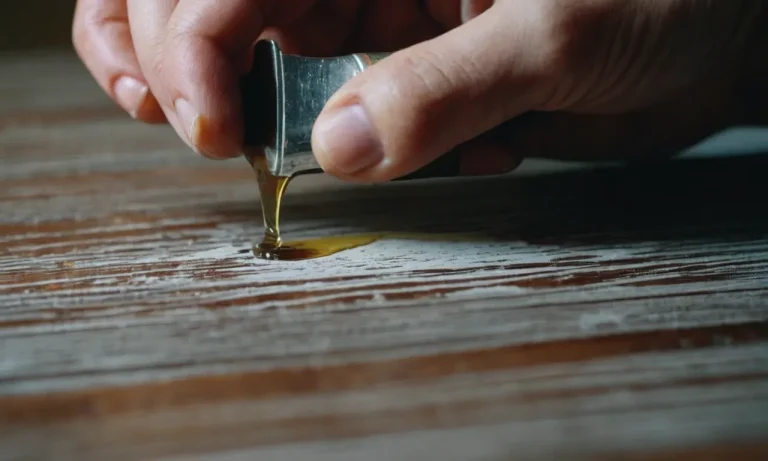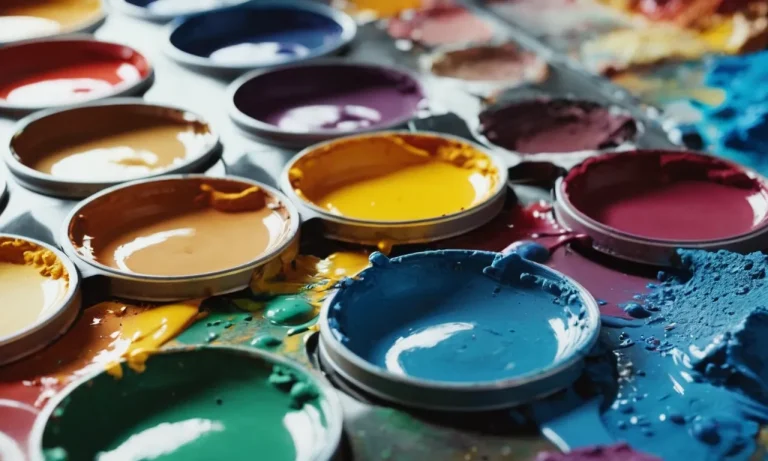Why Is My Floor Still Dirty After Mopping?
Spending time mopping the floors, only to find they still look dirty and dingy, can be frustrating. If you just can’t seem to get your floors clean no matter how much you mop, don’t worry – you’re not alone. Many homeowners deal with this pesky problem.
The good news is that with a few simple tweaks to your mopping method and products, you can finally get your floors looking fresh, clean and shiny. This comprehensive guide will outline the top reasons why floors may still look dirty after mopping, and provide tips to get them sparkling clean.
Using Dirty Mop Water
One possible reason why your floor is still dirty after mopping is that you are using dirty mop water. Mop water can get dirty quickly, especially if you are mopping a large area or if your floors are particularly dirty.
Mop Water Gets Dirty Quickly
When you mop your floors, the water in your mop bucket can quickly become dirty. This is because as you mop, the dirty water and debris on your floors get absorbed by the mop head. If you continue to use this dirty water to mop the rest of your floors, you are essentially spreading the dirt and grime around instead of removing it.
Change Mop Water Frequently
To ensure that you are effectively cleaning your floors, it is important to change the mop water frequently. As a general rule of thumb, it is recommended to change the water after mopping a small area or after every 10-15 minutes of mopping.
By doing so, you are ensuring that you are using clean water to remove dirt and grime from your floors.
Use Two Buckets for Mopping
Another tip to prevent using dirty mop water is to use two buckets for mopping. One bucket should be filled with clean water and a cleaning solution, while the other bucket should be used to wring out the dirty mop water.
This way, you can dip your mop into the clean water bucket, wring it out in the dirty water bucket, and then continue mopping with the clean water. This method ensures that you are always using clean water to clean your floors.
For more information on how to effectively mop your floors and keep them clean, you can visit Cleanipedia. They provide useful tips and guidance on floor cleaning techniques.
Not Sweeping or Vacuuming First
One of the main reasons why your floor might still be dirty after mopping is because you haven’t swept or vacuumed it beforehand. Sweeping or vacuuming is important because it helps to remove loose dirt, dust, and debris from the surface of your floor.
If you skip this step, you are essentially just pushing around dirt and making it harder to get your floor clean.
Sweep Away Loose Dirt and Debris
Before you start mopping, take a few minutes to sweep away any loose dirt and debris. Use a broom or dustpan to gather up any visible dirt, crumbs, or pet hair. This will make a huge difference in the cleanliness of your floor and ensure that you are starting with a clean surface.
Vacuum Thoroughly Before Mopping
If you have carpeted floors, it’s even more important to vacuum before mopping. Vacuuming not only removes loose dirt and debris but also helps to lift the fibers of the carpet, making it easier for the mop to reach and clean the surface.
Make sure to use a vacuum cleaner with a good suction power and effective attachments to thoroughly clean your carpeted floors.
Pay Special Attention to High Traffic Areas
High traffic areas, such as entryways and hallways, tend to accumulate more dirt and debris than other areas of your home. It’s important to pay special attention to these areas when sweeping or vacuuming before mopping.
Use a microfiber cloth or mop to clean these areas thoroughly, ensuring that you remove any dirt or grime that may have been tracked in from outside.
Remember, taking the time to sweep or vacuum before mopping will greatly improve the cleanliness of your floors. It may seem like an extra step, but it will save you time and effort in the long run. So, don’t neglect this important step and enjoy cleaner, spotless floors in your home!
Using Too Little Cleaner
One possible reason why your floor is still dirty after mopping is that you might be using too little cleaner. It’s important to read the cleaner instructions carefully to determine the appropriate amount to use.
Using too little cleaner may not effectively remove dirt, stains, and grime from your floors.
Read Cleaner Instructions Carefully
When it comes to using floor cleaner, it’s crucial to take the time to read the instructions provided by the manufacturer. Each cleaner may have different recommended amounts to use based on the type of flooring and the level of dirtiness.
By following the instructions, you can ensure that you are using the right amount of cleaner to achieve the best results.
Additionally, some floor cleaners may require dilution with water before use. Failing to dilute the cleaner properly can result in ineffective cleaning and leave your floor looking dirty even after mopping.
More Isn’t Always Better
While using too little cleaner can lead to inadequate cleaning, it’s also important to note that more isn’t always better. Applying an excessive amount of cleaner can leave behind a residue on your floor, attracting more dirt and making it appear dirty even after mopping.
This residue can be particularly problematic on certain types of flooring, such as hardwood or laminate.
Instead of pouring more cleaner onto your floor, try using the recommended amount and focus on thorough mopping techniques to ensure that the cleaner is evenly distributed and effectively removes dirt and grime.
Consider a Cleaner Made for Your Floor Type
Another factor to consider is whether the cleaner you are using is suitable for your specific type of flooring. Different flooring materials require different cleaning solutions. For example, hardwood floors may require a cleaner specifically formulated for wood, while tile floors may need a cleaner designed for ceramic or porcelain tiles.
Using a cleaner that is not compatible with your floor type can result in ineffective cleaning and leave your floors looking dirty. It’s important to check the label or consult the manufacturer’s website for recommendations on the appropriate cleaner to use for your specific flooring.
Remember, a clean floor not only enhances the appearance of your home but also contributes to a healthier living environment. By using the right amount of cleaner and choosing a product suitable for your floor type, you can ensure that your floors are sparkling clean after mopping.
Not Scrubbing Tough Stains
One possible reason why your floor is still dirty after mopping is that you may not be scrubbing tough stains effectively. Mopping alone may not be enough to remove stubborn dirt, grime, or stains that have become deeply embedded in your floor’s surface.
To effectively tackle these tough stains, consider the following tips:
Locate Heavily Soiled Areas
Before you start mopping, take a closer look at your floor and identify areas with heavy soil buildup or tough stains. These areas may require extra attention and a different approach to achieve a thorough clean.
Use a Stiff Scrub Brush or Pad
Instead of relying solely on a mop, try using a stiff scrub brush or pad specifically designed for floor cleaning. These tools can provide the extra scrubbing power needed to break down and remove stubborn stains.
Make sure to choose a brush or pad appropriate for the type of flooring you have to avoid causing any damage.
Let Cleaners Sit on Stains Before Scrubbing
In some cases, allowing a cleaner or stain remover to sit on the tough stain for a few minutes before scrubbing can enhance its effectiveness. This gives the cleaning solution enough time to penetrate and loosen the dirt, making it easier to remove.
Remember, it’s crucial to follow the manufacturer’s instructions when using any cleaning products on your floor. Additionally, always test any new cleaning method or product on a small, inconspicuous area of your floor before applying it to the entire surface.
If you’re looking for more in-depth guidance on how to effectively clean your specific type of flooring, refer to reputable websites such as Cleanlink.com or HGTV.com. These websites offer valuable tips and insights from industry experts to help you achieve a cleaner and more pristine floor.
Not Rinsing Thoroughly After Mopping
One possible reason why your floor is still dirty after mopping is that you are not rinsing thoroughly. When you mop your floor, the water and cleaning solution pick up dirt and grime from the surface.
If you don’t rinse the mop or change the water frequently, you may end up spreading the dirt and residue back onto the floor.
Dirty Water Can Leave Residue
When you mop the floor, the water can become dirty as it collects dirt, dust, and other particles. If you continue to use the same dirty water throughout the cleaning process, you may end up leaving residue on the floor. This residue can make your floor look dull and dirty, even after mopping.
To prevent this, it is important to change the water regularly while mopping. Empty the dirty water and refill the bucket with clean water and a fresh cleaning solution. This will ensure that you are not spreading dirt and residue around the floor.
Rinse With Clean Water Several Times
In addition to changing the water frequently, it is also important to rinse the floor with clean water after mopping. This will help remove any remaining residue or cleaning solution from the surface. Use a clean mop or a damp cloth to go over the floor again, this time using only clean water.
Rinsing with clean water several times can help ensure that all the dirt and cleaning product residue is removed from the floor. It will leave your floor looking cleaner and more polished.
Consider a Rinse Aid to Eliminate Streaks
If you find that your floor still has streaks or residue after rinsing thoroughly, you may want to consider using a rinse aid. A rinse aid is a product that helps prevent streaks and residue from forming on the floor. It can be added to the rinse water or sprayed directly onto the floor.
Rinse aids work by reducing the surface tension of the water, allowing it to spread more evenly and evaporate quickly. This helps prevent streaks and residue from forming, leaving your floor looking clean and shiny.
There are various rinse aid products available on the market, so make sure to choose one that is suitable for your floor type and follow the manufacturer’s instructions for best results.
Not Allowing Floors to Dry Completely
One of the main reasons why your floor may still be dirty after mopping is that you are not allowing it to dry completely. Wet floors can attract dirt and debris, making them appear dirty even after you’ve just cleaned them.
It’s important to ensure that your floors are thoroughly dried before walking on them or placing any objects on the surface.
Floors Look Dull When Wet
When floors are wet, they often appear dull and lackluster. This is because the water on the surface can reflect light in a way that makes the floor look less clean than it actually is. It’s important to remember that the appearance of your floor when wet is not necessarily an accurate representation of its cleanliness.
Give it some time to dry completely, and you will likely see a significant improvement in its appearance.
Let Floors Air Dry if Possible
If possible, it’s best to let your floors air dry naturally. This allows for proper evaporation of any remaining moisture, ensuring that your floors are free from dirt and grime. Open windows and doors to promote airflow, and avoid walking on the wet surface until it is completely dry.
Use Fans to Speed Up Drying Time
If you need to expedite the drying process, using fans can be a great solution. Positioning fans strategically can help to circulate air and remove moisture from the floor surface. This can significantly reduce drying time and leave your floors looking clean and spotless.
Consider using a fan in combination with air drying to achieve the best results.
Conclusion
With some simple adjustments to your mopping routine, you can finally achieve beautiful, clean floors. Be sure to sweep and vacuum first, use clean mop water and change it often, add the right amount of cleaner, scrub tough stains, rinse thoroughly, and allow floors time to dry completely.
With a little diligence, your floors will shine and you can say goodbye to the frustration of dingy floors after mopping.

